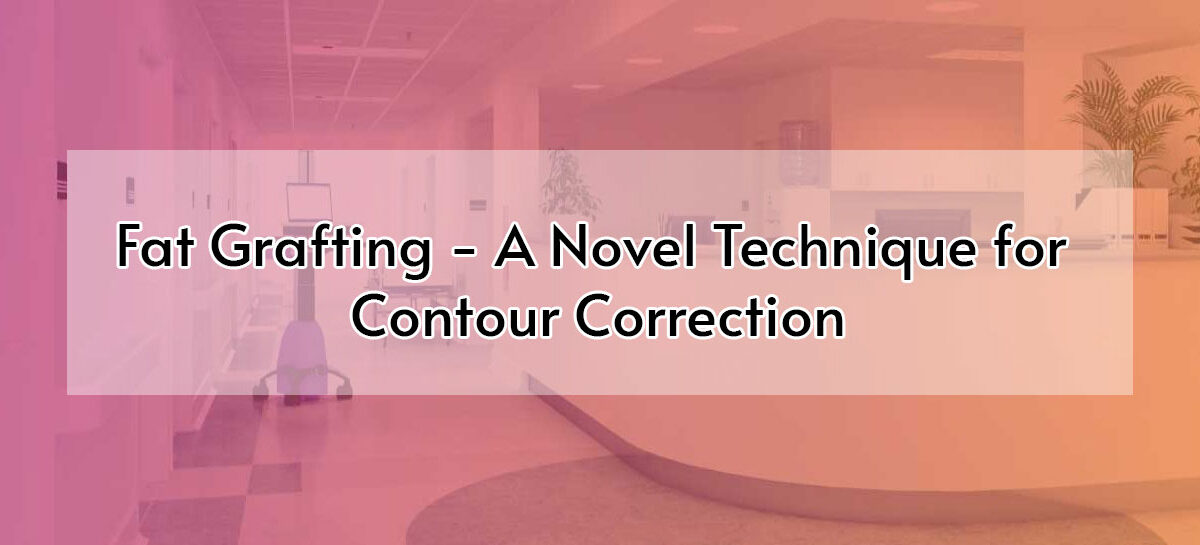Introduction:
Fat grafting is a procedure, where excess fat from one part of the body is removed by aspiration and injected into another area for correction of contour deformity and improved aesthesis. This was first introduced by Dr Coleman in 1986, but the technique got universal acceptable and application much later. The technique has been experimented and perfected in the last decade by many surgeons and evolved into a unique method for augmenting the volume in contour deficient areas of the body. It is used to correct deformity in face, augmentation of the breast, correction of post injury deformities in limbs and to improve appearance of the old scars.
Method:
The surgical procedure is performed under local anaesthesia or general anaesthesia depending on the volume required for correction. It is commonly done as a day care procedure.
Fat is harvested by a procedure called liposuction, which involves aspiration of the fat through 1 cm incisions and a metal cannula. The abdomen and the medial thigh are the most common donor sites.
The aspirated fat is made to vertically rest in a Leur-lok syringe for 10 to 15 minutes. It causes the fat to separate from the other fluids and oil. After discarding the fluids and oil, the fat is transferred into another syringe. This fat is later processed by reducing its size by repeated transfer through fat filters. When the fat size is reduced to lesser than 1 mm size, it is called nanofat, and it is used to improve appearance of scars.
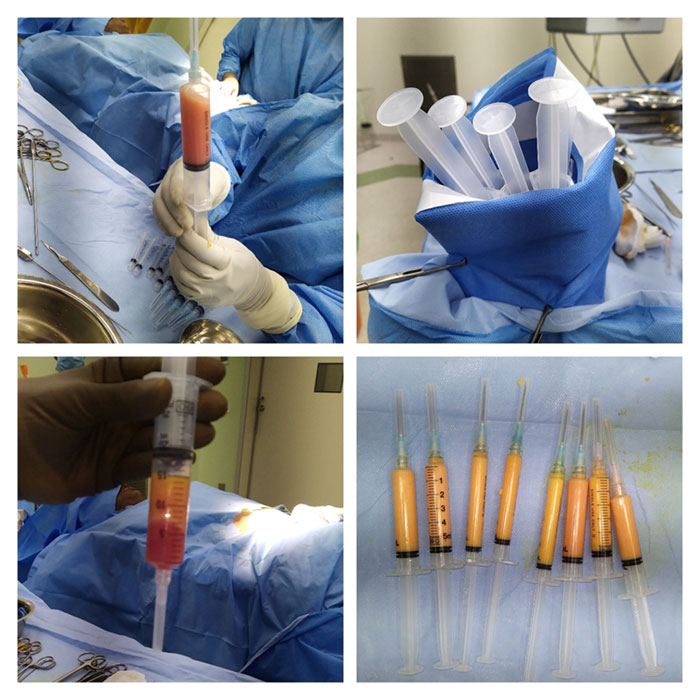
The processed fat is transferred into 2 ml Leur-lok syringe for the next stage, which is fat injection. The region that needs the contour correction is marked pre-operatively. A needle puncture is made with an 18 G needle at a site hidden and also distant from the area to be corrected. Using a blunt cannula fat is injected meticulously using withdrawal technique in such a way that each 0.1 to 0.2 ml is separated from each other by the host tissues. This is to create a large surface area of contact between the injected fat and recipient tissues and maximises survival of the transplanted fat.
Post-operatively patient is advised analgesics and ice packs for the operated regions. Some swelling is expected in the post-operative period which subsides in a couple of weeks with corrective measures like anti-inflammatory medication and elevation.
The percentage of fat uptake depends on the vascularity of the recipient tissues and ranges from 30-70% of the injected volume. Hence to achieve the desired outcome 2 to 3 sittings of fat grafting is required in an interval of 6 months, which is explained and counselled to the patient before the procedure.
Complications of the procedure includes bleeding, infection, and calcification of fat but are not common. Adequate pre-operative preparation, performance of procedure by trained plastic surgeons and a good post-operative care minimises the risk of complications.
Clinical Cases:
1) A young lady with post infective deformity of the right cheek, corrected by fat grafting showing excellent symmetry of cheeks and enhanced appearance.
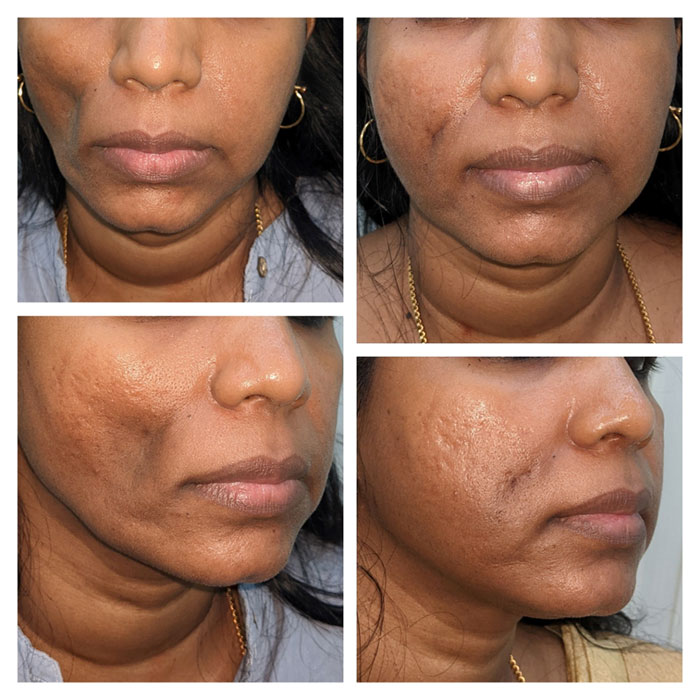
2) A young lady with congenital deformity of upper lip underwent fat grafting to improve volume and projection of lips.
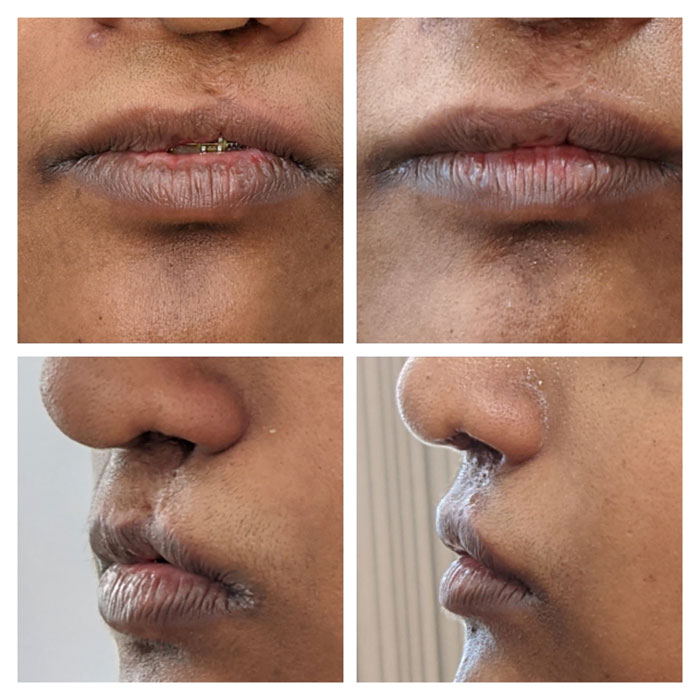
3) A young male with an alopecic scar in right eyebrow, had a scar revision with nanofat grafting to improve appearance of the scar.

4) A young lady with ptotic and small breasts, underwent fat grafting for augmentation of size and to correct ptosis.
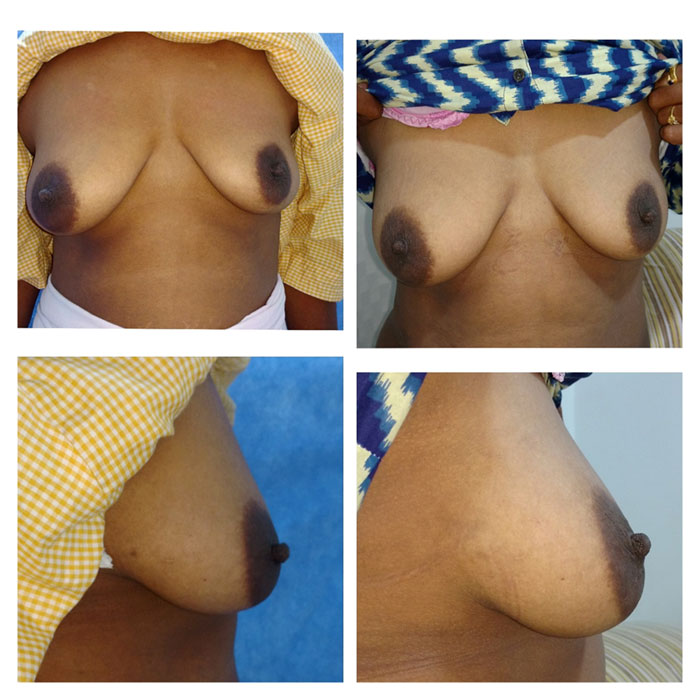
Conclusion:
Fat grafting is a safe and excellent procedure for correction of contour deformities caused by congenital, trauma or previous disease. It is also used to improve the appearance of old scars. Plastic surgeons with special interest in Aesthetic surgery are well trained to perform this procedure with consistent positive outcomes.


